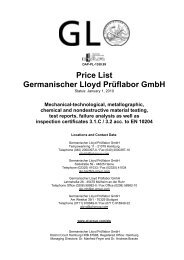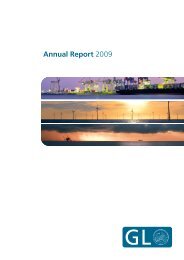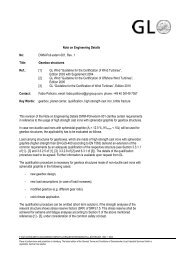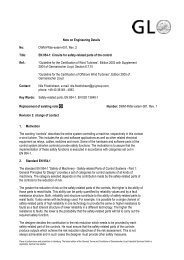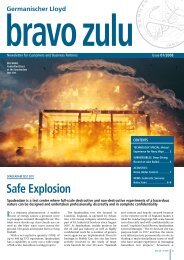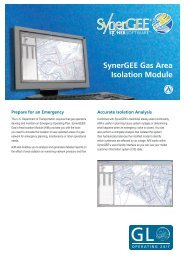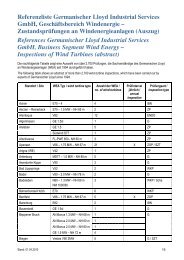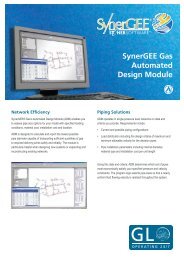Hazard Identification Studies (HAZID) - Gl-group.org
Hazard Identification Studies (HAZID) - Gl-group.org
Hazard Identification Studies (HAZID) - Gl-group.org
You also want an ePaper? Increase the reach of your titles
YUMPU automatically turns print PDFs into web optimized ePapers that Google loves.
Service Description<br />
and Values Generated:<br />
Motivation<br />
The operator of a technical installation by which health and safety,<br />
the environment, assets and the operator’s reputation could be<br />
affected is obliged by European legislation to:<br />
have an up-to-date knowledge about all safety-relevant<br />
aspects of their operations,<br />
prevent accidents or to limit their impacts/escalations (as<br />
per the Seveso II Directive),<br />
control hazards reliably and to minimise risks by<br />
identifying installations with risk potential regarding<br />
health and safety as well as the environment, evaluating<br />
their inherent risks and specifying risk mitigation<br />
measures (which is part of the risk management process),<br />
design, start up, operate and maintain workplaces in such<br />
a manner that the workforce can conduct work without<br />
putting their own safety and health or that of others at<br />
risk.<br />
Objectives<br />
The objectives of the <strong>HAZID</strong> procedure offered by Germanischer Lloyd<br />
(GL) are to identify main hazards, to review the effectiveness of<br />
selected safety measures and, where required, to expand the safety<br />
measures in order to achieve a tolerable residual risk. In compliance<br />
with the Seveso II Directive, besides facility safety concepts for new<br />
installations, also safety concepts for existing operational facilities<br />
have to be reviewed.<br />
The analysis serves the operator as proof that installations are<br />
operated such that hazards for employees, third parties, the<br />
environment and the surroundings can largely be excluded. The<br />
operator’s management gets an up-to-date picture of the present<br />
hazards and their possible effects.<br />
By means of the <strong>HAZID</strong> analysis the primary process, but also<br />
non-process, hazards as well as their possible escalations can be<br />
identified due to the structured manner of the procedure. Employees<br />
can be advised of the relevant hazards concerning their working area.<br />
At the same time the outcomes can be taken as a support in<br />
compiling the required neighbourhood information. The facility<br />
designer considers the analysis results to improve safety concepts for<br />
new-built installations.<br />
SERVICE DESCRIPTION<br />
Frequency of Reviews<br />
<strong>HAZID</strong> analyses are usually to be revised when considerable<br />
modifications, upgrades or re-design of existing facilities are carried<br />
out or if events like accidents, critical situations or near misses call for<br />
this. In this context a change, upgrade or re-design is to be<br />
considered as essential if process modifications associated with<br />
consequences for safety or safety related equipment are involved. This<br />
also applies for utilities including buildings, machinery, equipment<br />
etc. that do not necessarily contribute to the primary operating<br />
objective but which are associated with the process facilities in terms<br />
of layout or operation and that are safety relevant. Those being in<br />
charge of operations and those working in the facilities are obliged<br />
to indicate all identified possible changes. In principle operators are<br />
expected to repeat the analyses at least every 5 years in order to<br />
maintain the residual risk as low as reasonable practical.<br />
Offered Service<br />
The service offered in this matter is the provision of an experienced<br />
facilitator/chairman and a minute taker who guides through the<br />
<strong>HAZID</strong> sessions in a formal and consistent manner and captures the<br />
relevant results into the prepared <strong>HAZID</strong> spreadsheet. Subsequently<br />
upon completion of the sessions a report is prepared by the <strong>HAZID</strong><br />
chairman and submitted to the client.<br />
3



